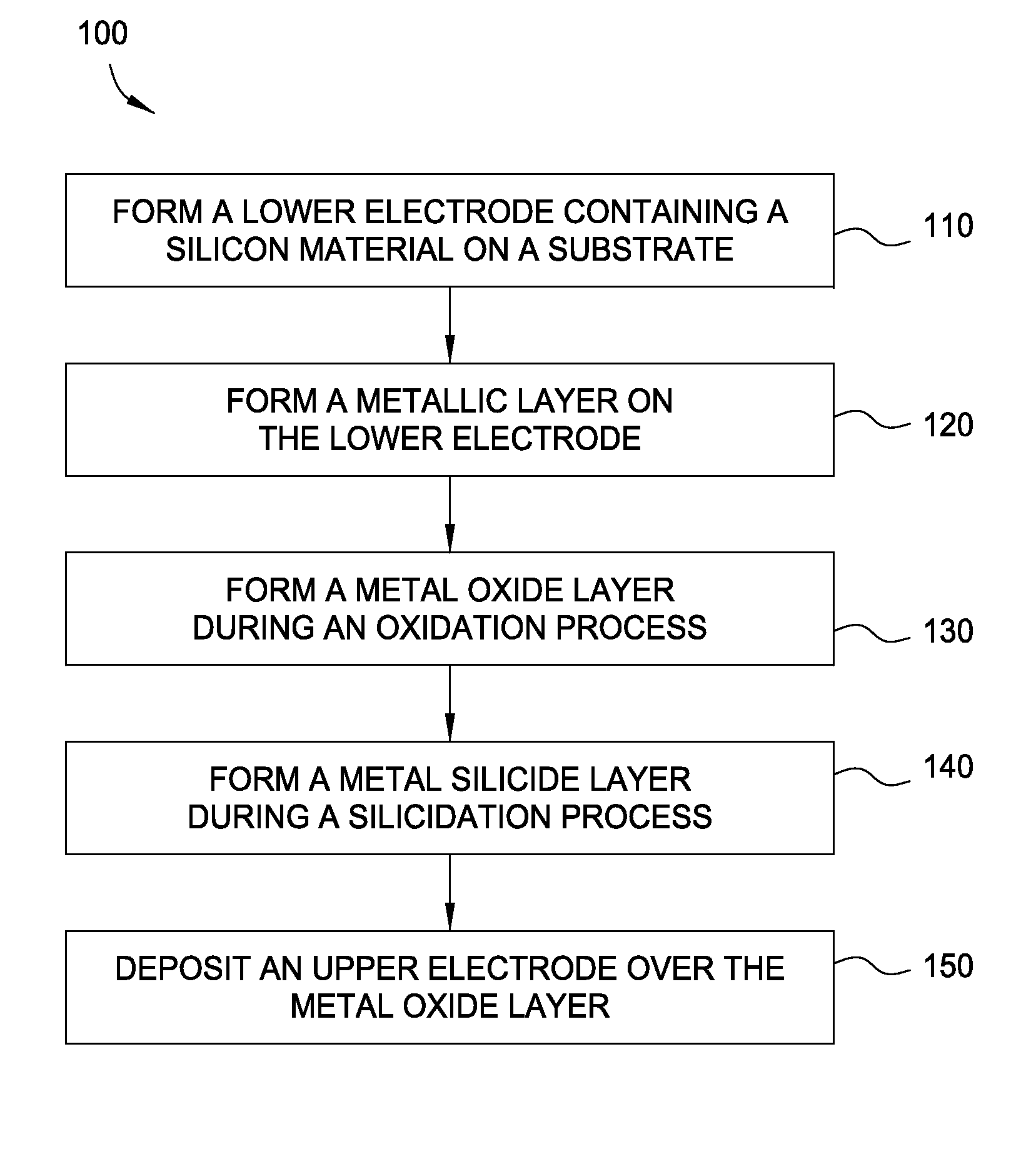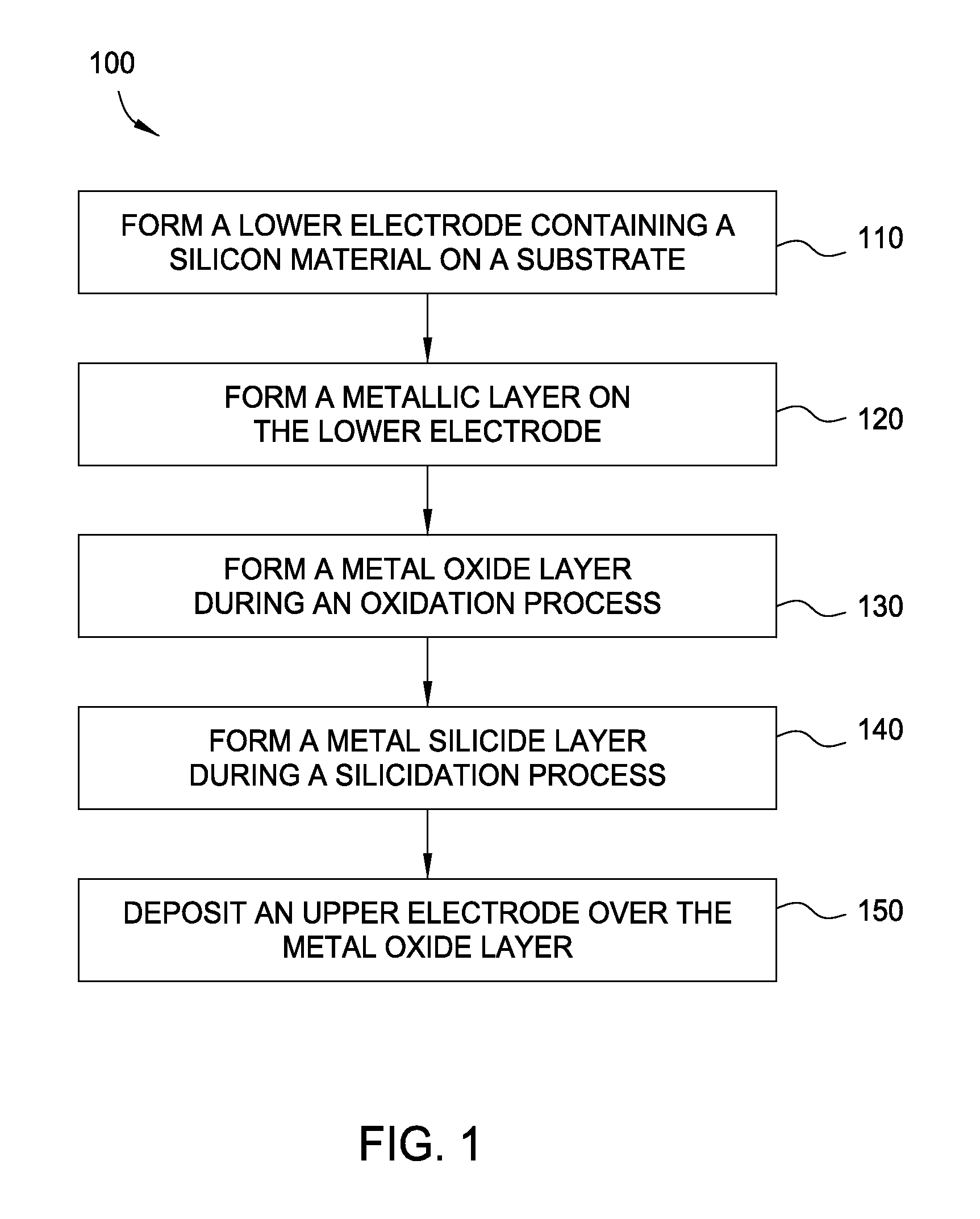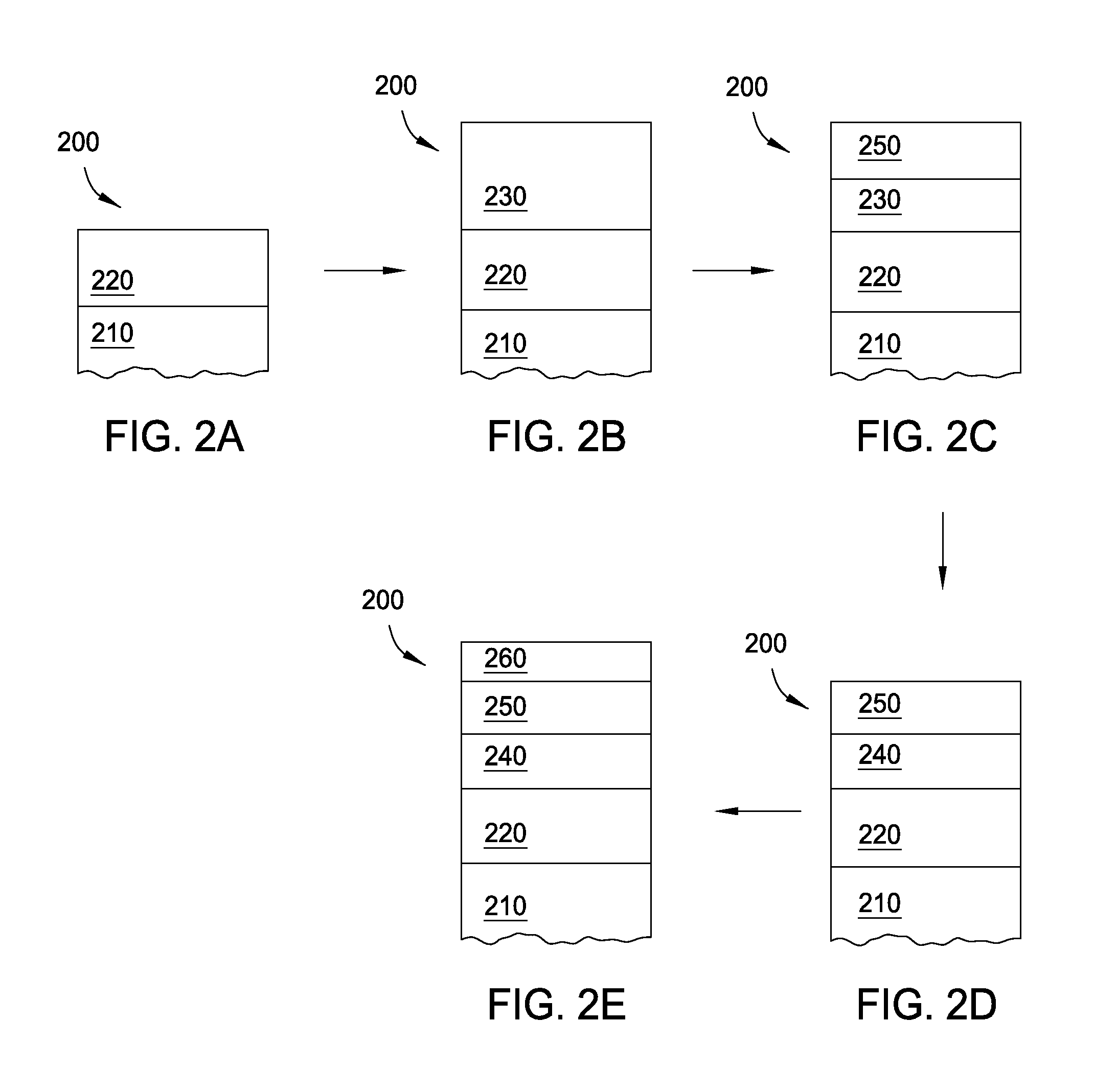Method for forming metal oxides and silicides in a memory device
a memory device and metal oxide technology, applied in the field of memory devices, can solve the problems of insufficient resistance of low resistance metal oxide films to be used within a practical nonvolatile memory device, the inability to form reliable nonvolatile memory devices, and the inability to meet the requirements of low resistance metal oxide films
- Summary
- Abstract
- Description
- Claims
- Application Information
AI Technical Summary
Benefits of technology
Problems solved by technology
Method used
Image
Examples
Embodiment Construction
[0026]Embodiments of the invention generally relate to nonvolatile memory devices and methods for manufacturing such memory devices. The methods described herein provide a broader range of metal oxides and metal silicides than available with previous deposition techniques. The metal silicide materials in some examples provide a better interface for the lower electrode by reducing switching voltage and on / off currents relative to pure silicon. The methods provide desired doping of the metal oxide / silicide film stack by utilizing the specified temperatures during the oxide / silicide formation processes, therefore, metal oxide / silicide film stacks may be formed which meet or exceed the requirements of switching voltage and on / off currents.
[0027]FIG. 1 is a flowchart illustrating a method for manufacturing or otherwise forming various memory devices, as described by embodiments herein, such as process 100 which may be utilized to form resistive switching memory elements / devices, such as ...
PUM
| Property | Measurement | Unit |
|---|---|---|
| temperature | aaaaa | aaaaa |
| temperature | aaaaa | aaaaa |
| temperature | aaaaa | aaaaa |
Abstract
Description
Claims
Application Information
 Login to View More
Login to View More - R&D
- Intellectual Property
- Life Sciences
- Materials
- Tech Scout
- Unparalleled Data Quality
- Higher Quality Content
- 60% Fewer Hallucinations
Browse by: Latest US Patents, China's latest patents, Technical Efficacy Thesaurus, Application Domain, Technology Topic, Popular Technical Reports.
© 2025 PatSnap. All rights reserved.Legal|Privacy policy|Modern Slavery Act Transparency Statement|Sitemap|About US| Contact US: help@patsnap.com



